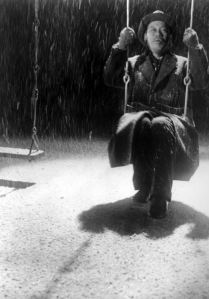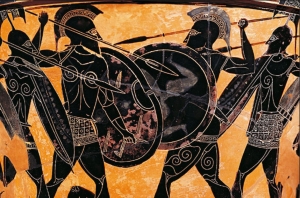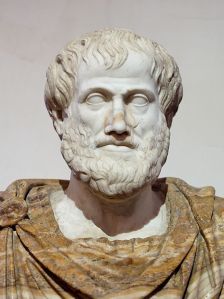Another post from the History Book Club, based on:
- The Films of Akira Kurosawa, by Donald Richie
- The Warrior’s Camera: The Cinema of Akira Kurosawa, by Stephen Price
- Something Like an Autobiography, by Akira Kurosawa.
- Commentary tracks in the Criterion Collection
Kurosawa dates are 1910 to 1998. Between 1943 and 1965 he directed 23 pictures in 22 years, but after that completed just 7 pictures in the next 28 years. This is only partly explained by changes in the Japanese cinema industry in the wake of TV. In 1971, beset by career difficulties and an undiagnosed gallstone illness, he attempted suicide.
Rashomon and The Seven Samurai are certainly his two most famous films. But his range is much wider. Of his 30 pictures, 16 are modern, 8 are samurai, and 6 historical (like Rashomon).
One knock against him, especially in Japan, is that he is too “western”. Like many oft-repeated assertions, this contains a germ of truth, but the inherent oversimplification make it not that illuminating. Donald Richie remarks that Americans are often surprised at the western dress in Kurosawa’s films, even though this aspect of westernization was well underway before Kurosawa’s birth.
In fact, Japan became more and more westernized from Meiji period onward (i.e., after Admiral Perry). An ambivalence towards foreign influence is a universal phenomenon. Kurosawa tells of the dislocation he felt on transferring, in the second grade, from a modern European-style school to a much more traditional one.
The issue of western influence can be fruitfully explored through Kurosawa’s samurai pictures. Kurosawa acknowledged his love of John Ford, but as Stephen Prince demonstrates, the influence is mainly formal. He rightly says, “Kurosawa’s Seven Samurai does not really translate to an American context.” The feudal class differences between samurai and peasant have no parallel in the gunfighter-farmer relationship in American westerns.
American westerns typically glorify the lone gunfighter. Kurosawa’s take on the individual vs. society is more ambiguous. He sets his samurai films during the Sengoku (“Warring States”) period, when the social contract had largely broken down. (Parenthetically, most prior Japanese samurai pictures took place in the following Edo (Tokugawa shogunate) period, an era of unprecedented stability.)
As one American critic has noted, American’s sense of self “seems to stop at the skin”, while the Japanese center of self is rooted in social relationships. The Seven Samurai demonstrates this over and over again, in the contract between the samurai and the peasants, the connections among the samurai, and in the character played by Toshiro Mifune, a peasant’s son who has become a samurai. Significantly, all the samurai are ronin, that is, masterless samurai, and this is not by choice but because of the general social breakdown.
The tension between the individual and society also informs Kurosawa’s political outlook. Kurosawa has been criticized from both the left and the right, charged with being both too political and not political enough. He was accused of elitism because of his focus on heroes.
While not an “engaged” filmmaker, Kurosawa is a humanist. The war and the Occupation explain his outlook. As he said:
During the war, there was no freedom of expression. At the end of the war, I had so much to say, I was overfilled with things to say about Japan. … Unfortunately, I have to admit that I did not have the courage to resist [Japan’s descent into militarism] in any positive way.
Stephen Prince suggests that post-war, Kurosawa saw filmmaking as a chance “to address the Japan shattered by WWII, and to help reshape its society”, almost as a form of redemption.
Japan in the immediate post-war period was a ruined nation, both physically and psychologically; Donald Richie speaks movingly of the devastation he saw in Yokohama as a young soldier.
Drunken Angel appeared in 1948; Kurosawa said, “In this picture I was finally myself.” It tells the story of an alcoholic doctor who tries to save a young yakuza (Toshiro Mifune, in his first Kurosawa role), both from TB and from his life of crime. (TB was a serious problem at this time.)
The film takes place around a cesspool, a symbol of the corruption of postwar Japan.. The doctor finally fails to save the yakuza, but he does score a small victory, curing a 17-year old girl of TB.
Kurosawa circumvented censorship problems from the CIE (Civil Information and Education Section, part of the Allied Occupation administration) in various ways; nonetheless, he contrasts them favorably with the wartime Japanese censors in his autobiography:
The rout of the censors in the Ministry of Interior was a delight beyond measure…. My meeting with this American censor is a heart-warming memory. Having lived through an age that had no respect for creation, I recognized for the first time that freedom of creation can exist. …
Roger Ebert said regarding the 1952 film Ikiru (To Live):
Over the years I have seen Ikiru every five years or so, and each time it has moved me, and made me think. And the older I get, the less Watanabe seems like a pathetic old man, and the more he seems like every one of us.
Like Drunken Angel, Ikiru celebrates a small victory, this time over bureaucracy. The hero is a 30-year bureaucract, a “living corpse”, who contracts stomach cancer. He has a year to live. After trying in various ways to escape his feelings of futility, he finally calls on a lifetime of acquired skills to turn a cesspool into a playground. The themes are universal, but the storytelling is quintessentially Japanese, particular the last third of the film, portraying Watanabe’s funeral service.
Ikiru might be my favorite Kurosawa film. But one of his last pictures, Dreams, has stayed with me like few other films. I cannot do better than the Criterion Collection’s description:
Unfolding in a series of eight mythic vignettes, this late work by Akira Kurosawa was inspired by the beloved director’s own nighttime visions, along with stories from Japanese folklore. In a visually sumptuous journey through the master’s imagination, tales of childlike wonder give way to apocalyptic apparitions … Akira Kurosawa’s Dreams is both a showcase for its maker’s artistry at its most unbridled and a deeply personal lament for a world at the mercy of human ignorance.










